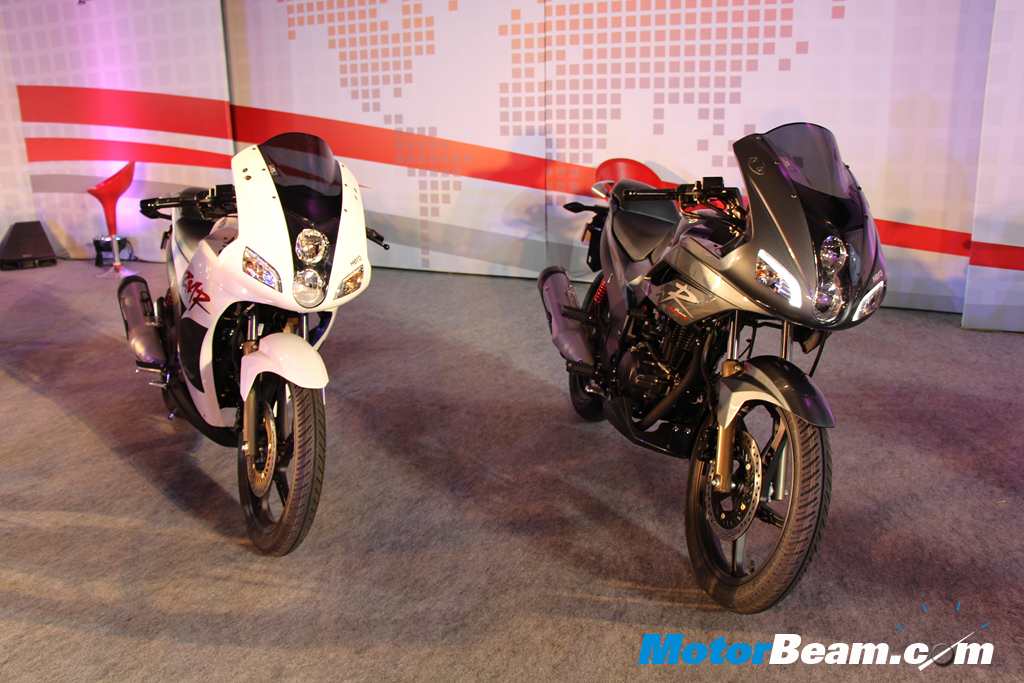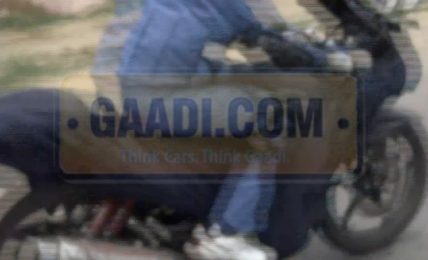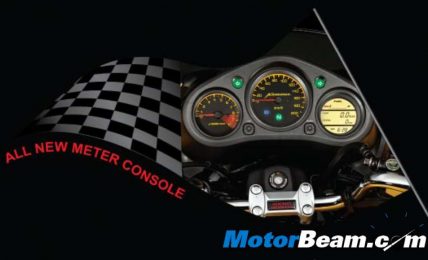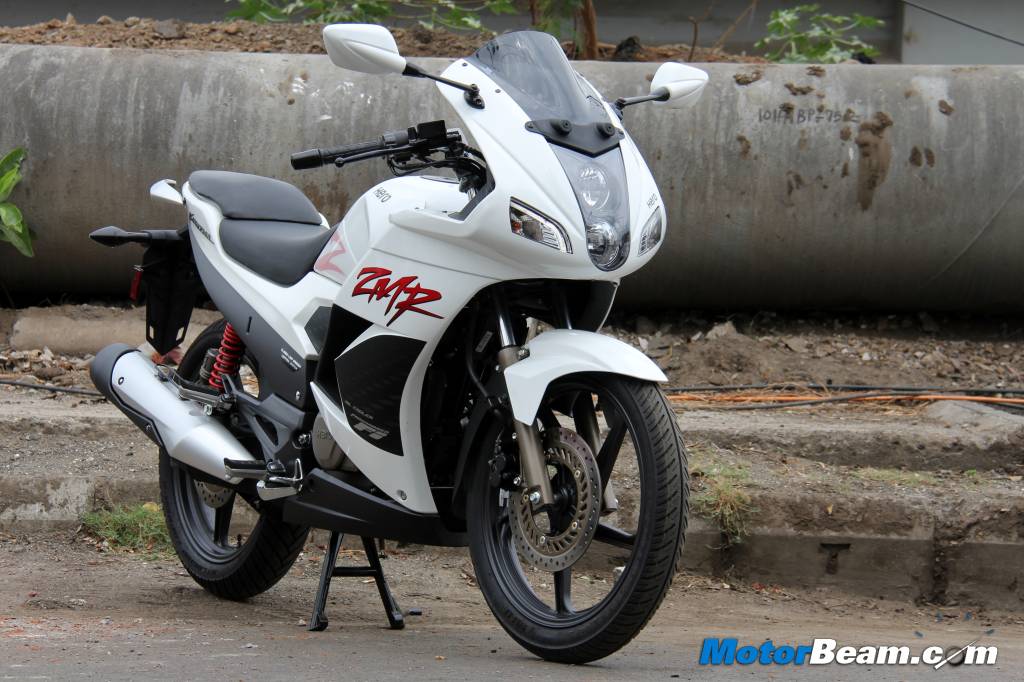
2014 Hero Karizma ZMR Review
Bike Tested: 2014 Hero Karizma ZMR
Price OTR Mumbai: Rs. 1,16,610/-
The updated Karizma ZMR continues to be a no-nonsense bike with high focus on comfort.
The fan following for the Karizma brand is almost unparalleled, since its launch in 2003, people have closed their eyes and bought this motorcycle. In 2009, Hero added a new variant to the line-up, the Karizma ZMR, a bike which was inspired from the speed king, Suzuki Hayabusa. Within five years of the ZMR’s launch, Hero has updated the bike, this time giving it a big change of sorts. The Karizma ZMR continues to be a full-faired, fuel-injected motorcycle but gets all new styling, added features and finally more power. Seems like a winning proposition, or is it? We hop onto the saddle of Hero’s flagship to find out if beauty can be skin deep too?
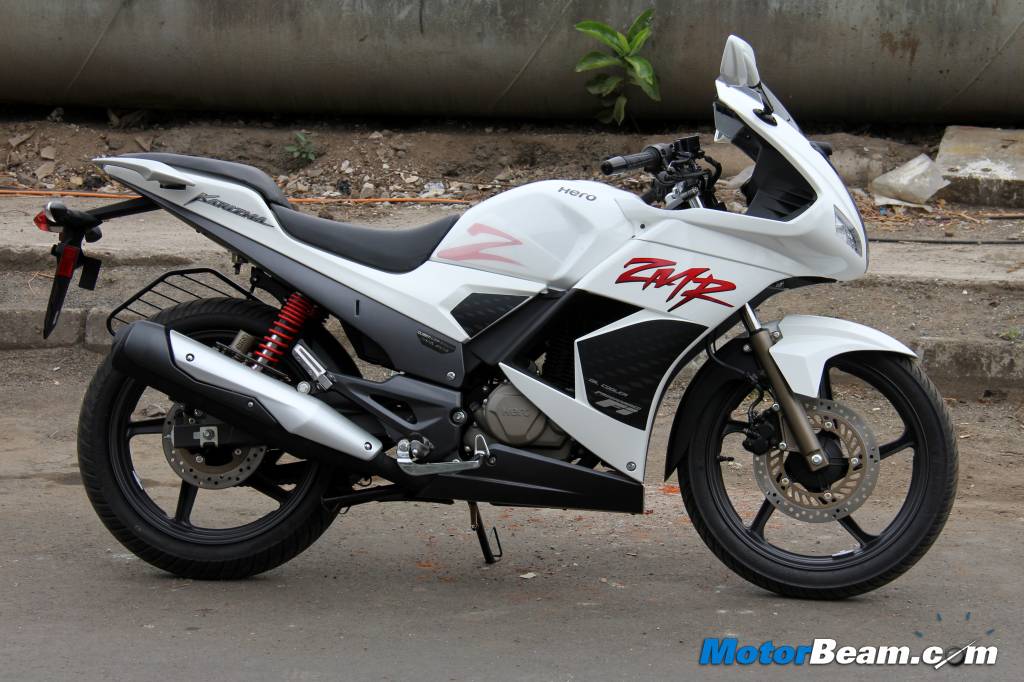
The old Karizma ZMR never took off and that was largely because of its disproportionate styling. While a lot has been said about the new Karizmas design, there is no denying that the updated ZMR looks far better than the original. While the front of the old ZMR was better, overall, the new bike seems more easy on the eyes. Where the new ZMR really scores on the styling front is the fairing, which doesn’t seem odd and gels well with the overall design (it isn’t bulky and a small opening reveals the engine). That’s not all, the new ZMR has faux carbon fibre stickering on the fairing which does manage to reduce the visual mass. The front styling of the new ZMR is what really puts most off while the side and rear are good looking and tend to grow on you. Still, not much points to Hero’s designers for the way they have styled the Karizma ZMR. Sure, it draws inspiration from EBR’s superbikes but that really isn’t a given formula for eye candy.
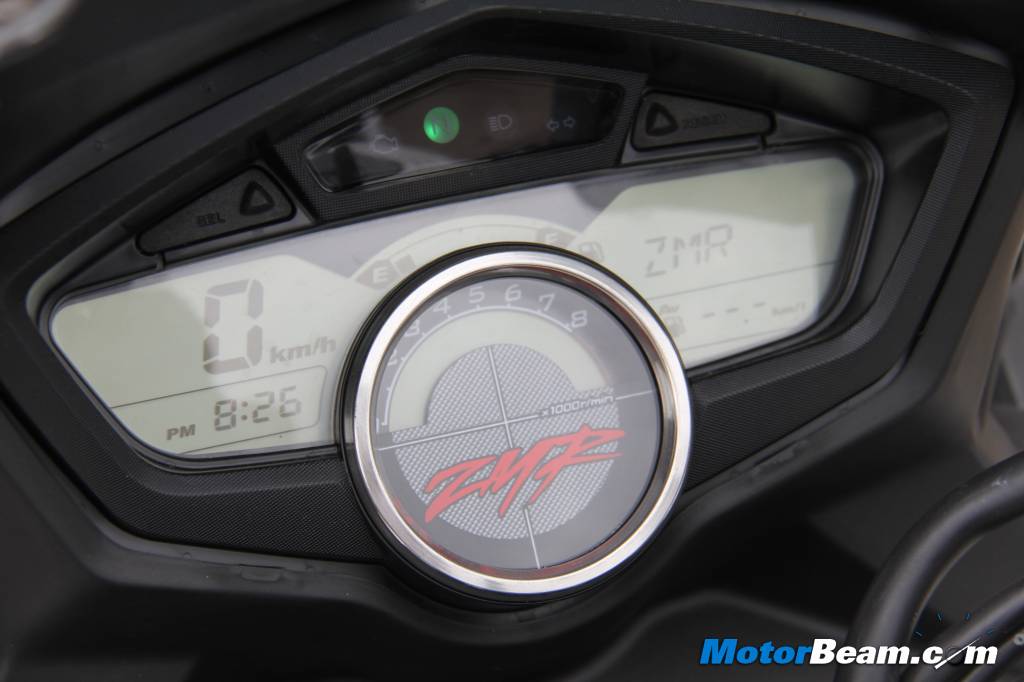
The instrument cluster hasn’t changed one bit on the updated Karizma ZMR, it’s still the same all digital unit which is big and easy to read on the move. Small gimmicks like welcome and good-bye messages are neat. The console has a real-time mileage indicator which isn’t of much use as the reading is based on your throttle input, it can show anything from 10 to 99.99 km/l! The unit is backlit with a cool blue light, we like it. There is however, the inclusion of a side stand warning, which is also offered on the updated Karizma R. However unlike the Karizma R, where the warning is with a light, on the ZMR, a message runs on the right stating about the active side stand. Still, this is one of the best instrument clusters we have seen at this price point. But the same switchgear continues to disappoint, there is still no engine kill switch.
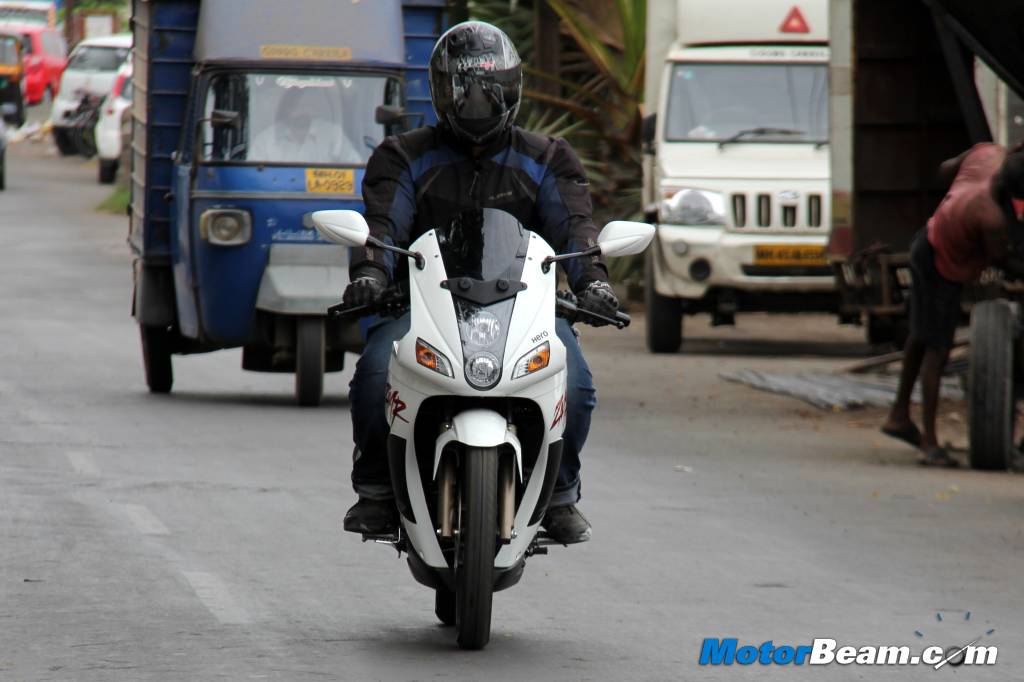
The seating position is the same as before, you get clip-on handlebars which along with the slightly forward set riding position gives the rider of the Karizma ZMR a comfortable yet sporty riding posture. You sit low but do get the big bike feel. The mirrors offer good view of what’s behind and the seats are well cushioned and are now a split unit, rather than a one piece design found on the old bike. This liberates quite a lot of space for the pillion. Split grab rails are carried over from the previous bike but these are freshly designed and work really well for the person sitting behind.
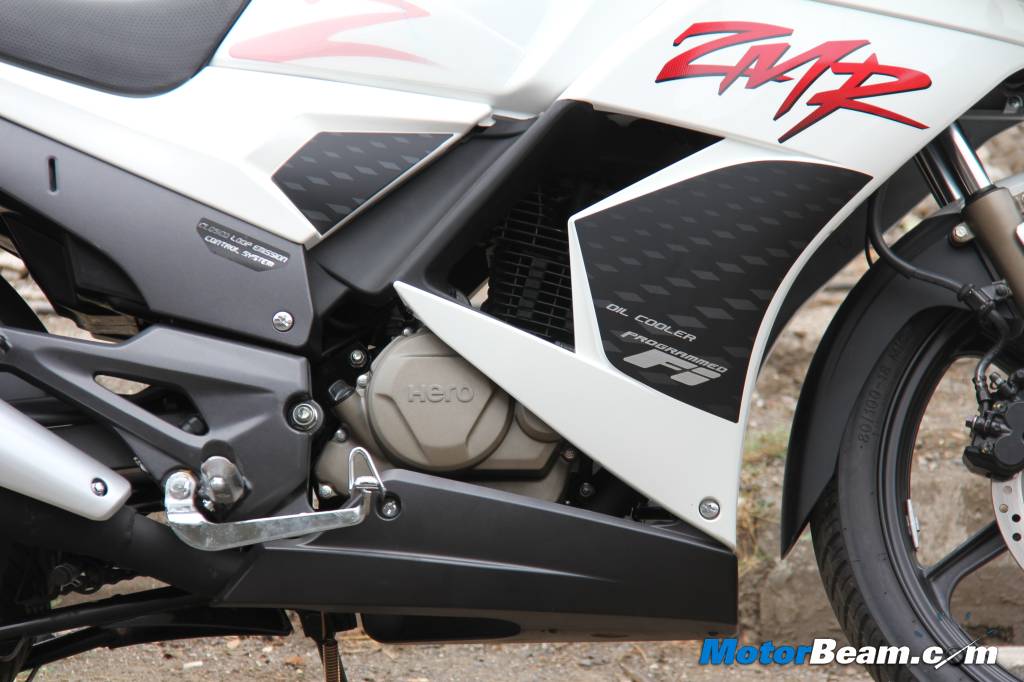
When Hero gave the Karizma a fuel-injection system in the ZMR, the increase in output was marginal, which was a big disappointment. Finally the ZMR has been given a good update in performance as the 223cc, oil-cooled engine now produces 20 BHP of power and 19.7 Nm of torque, an update of 2.4 BHP and 1.35 Nm. This Honda single has always been known for its refinement and it continues to please with its smoothness but only in the low-end as there is a lot of buzzing from the motor post 5000 RPM. The bike feels more eager now, the low end having more pep as the increased torque comes at the same 6500 RPM. The increase in peak power comes 1000 RPM later, at 8000 RPM and the gearing of the bike remains the same as earlier.
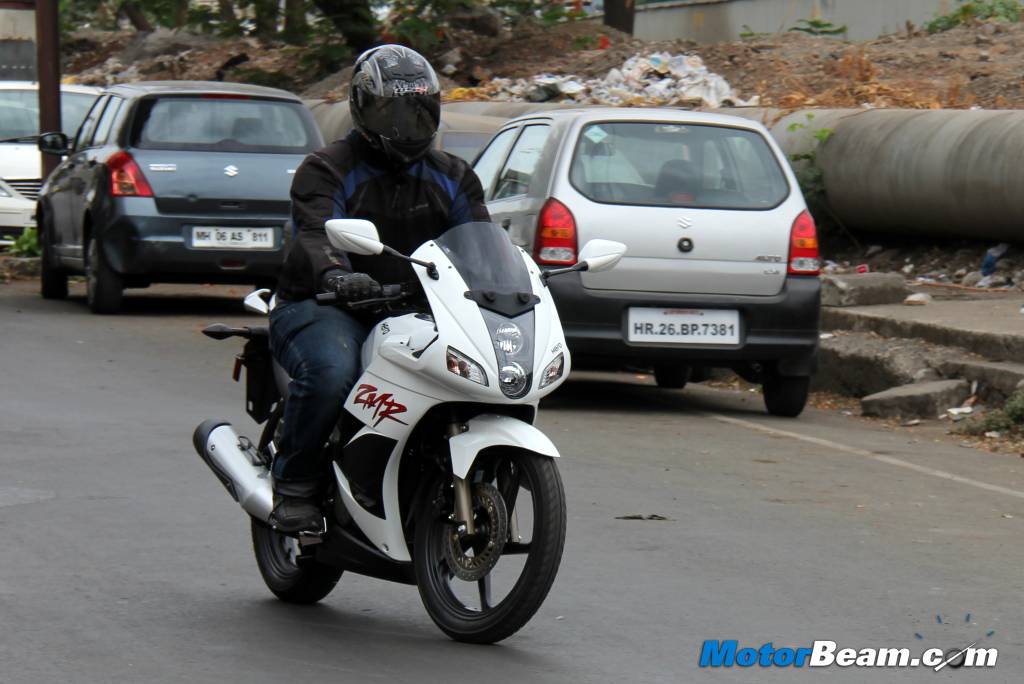
Other than the definite increase in performance, the updated Karizma ZMR also boasts of a stronger mid-range, the bike responds to throttle inputs more instantly and the character of the engine remains unchanged, it feels very torquey with power delivery being linear. However, the motor vibrates quite a lot at high-end of the power band, more than the old ZMR. The vibrations can be felt at the foot pegs, grab rails and handlebar. Top speed is claimed to be 129 km/hr, so there isn’t any improvement on that front but we expect the mileage to remain the same as before, which is 37 km/l in the city, stretching to 40 km/l on the highway.
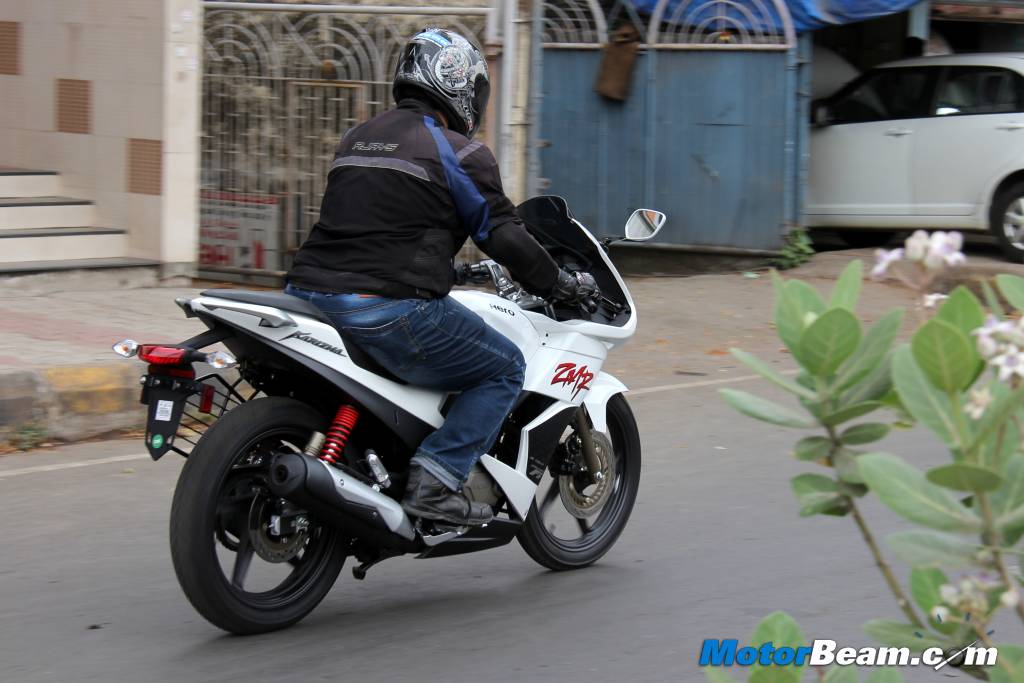
The same underpinnings do duty on the updated Karizma ZMR, the diamond frame isn’t that great for handling but the bike does offer improved dynamics, courtesy of the 2 kgs reduction in weight and wider tyres (the rear gets a 120 section). Still, the 18-inch wheels rob the ZMR from tight handling while the rear still doesn’t get a monoshock rear suspension, the ZMR continues to employ a 5-step adjustable GRS system, which isn’t the easiest to adjust.
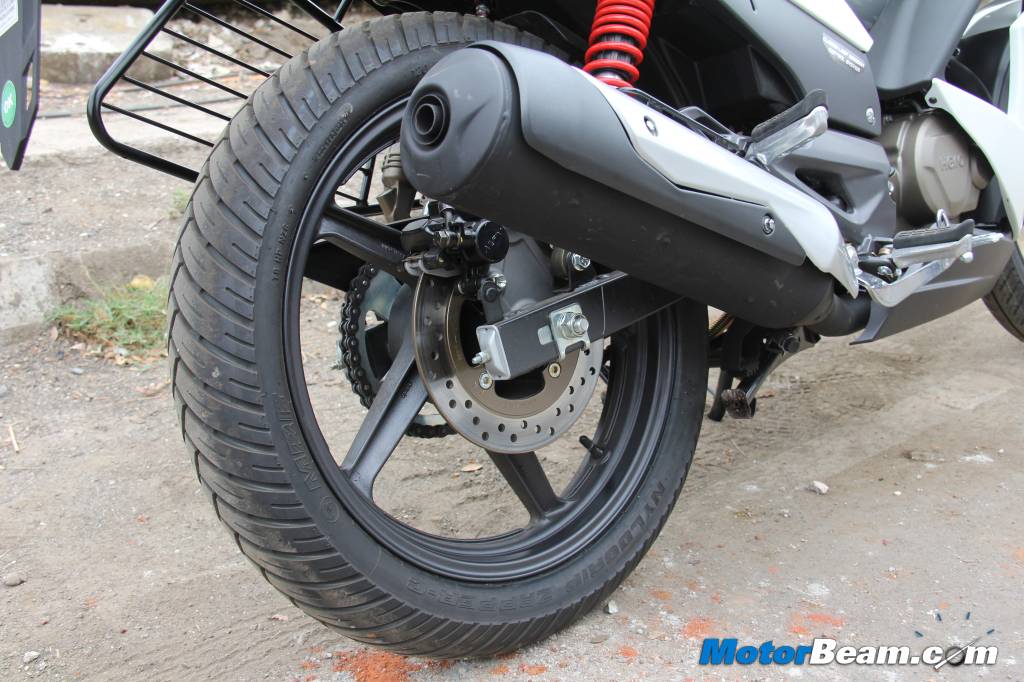
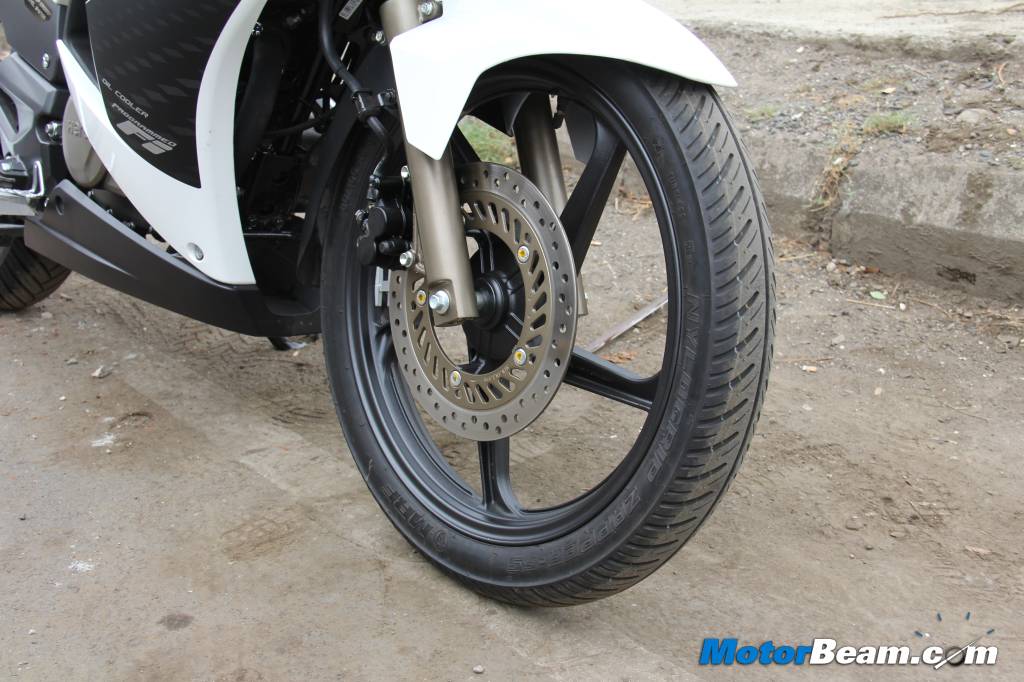
Hero has now given the ZMR a half chain case, the rear sports a bigger 120 section tyre for improved grip
The full chain case has been replaced by a half chain case which will rob away practicality for the purpose of aesthetics. Ride quality is excellent, the ZMR being a comfortable bike for long rides and the braking performance is good with enough stopping power at both ends. In spite of weighing 157 kgs, the ZMR doesn’t feel its weight, it’s light and nimble when riding in the city with manoeuvrability being quite good as well.
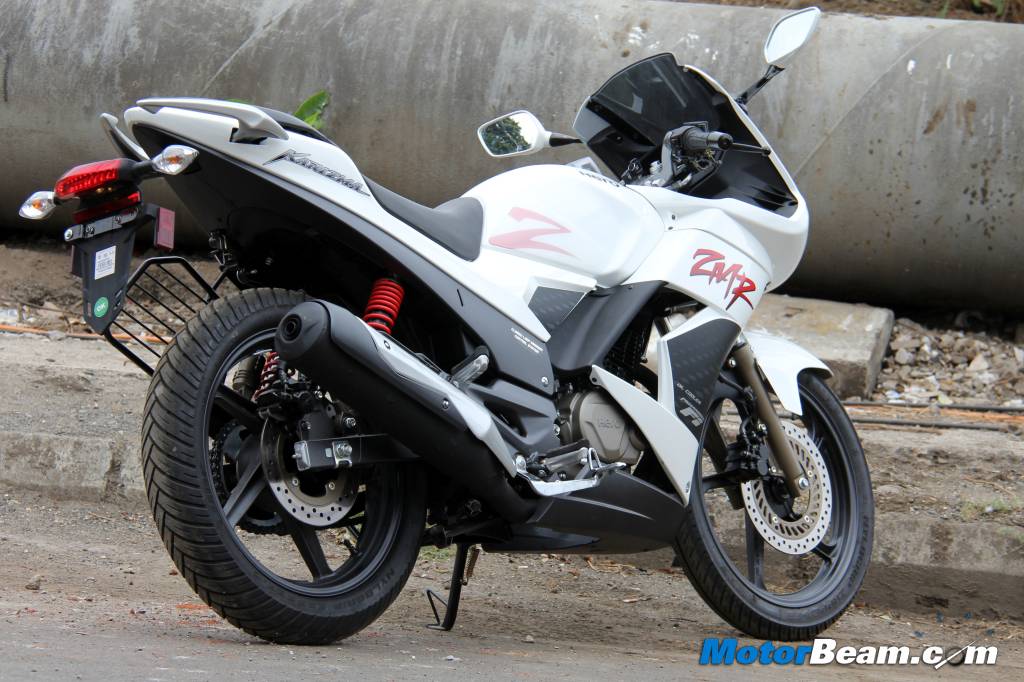
Hero MotoCorp has tried to do a lot to the new Karizma ZMR but it’s clear the changes are just a stop-gap arrangement till the HX250R arrives in the market. While the styling has been updated and output has been increased, the rest of the things remain largely the same. Thus, the Karizma ZMR continues to ride and handle more or less like before and the braking performance hasn’t changed much either. The tyres are the only factor making a difference between the old and new ZMR’s dynamics. Still, with more pep in its belly, the Karizma ZMR is definitely quicker but at its current price, it simply doesn’t make such a strong impression as other bikes around the same price point.
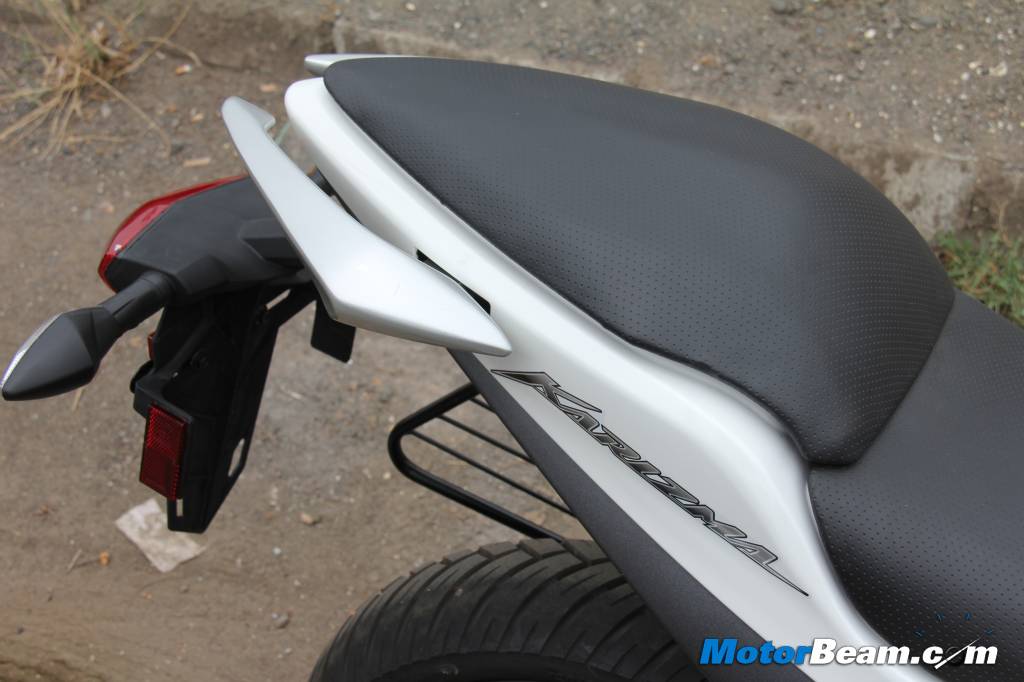
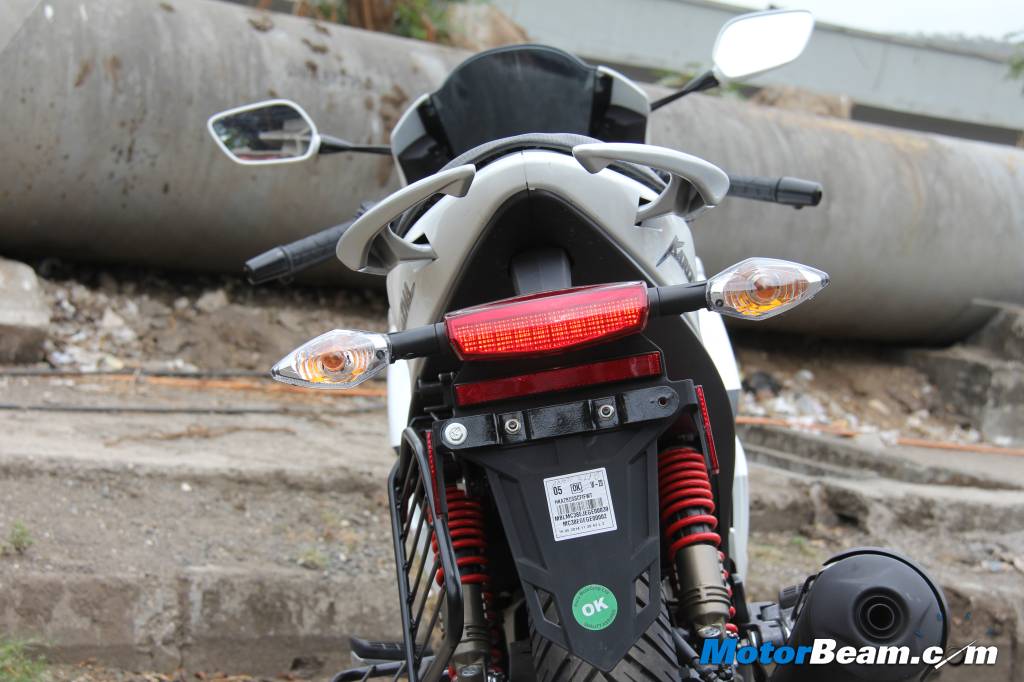
The ZMR shares its styling with the Karizma R, rear gets a floating LED brake light which is EBR inspired
What’s Cool
* Reliable full faired bike
* Cheap to service
* Increased output
What’s Not So Cool
* Styling
* Rattling and vibrations


